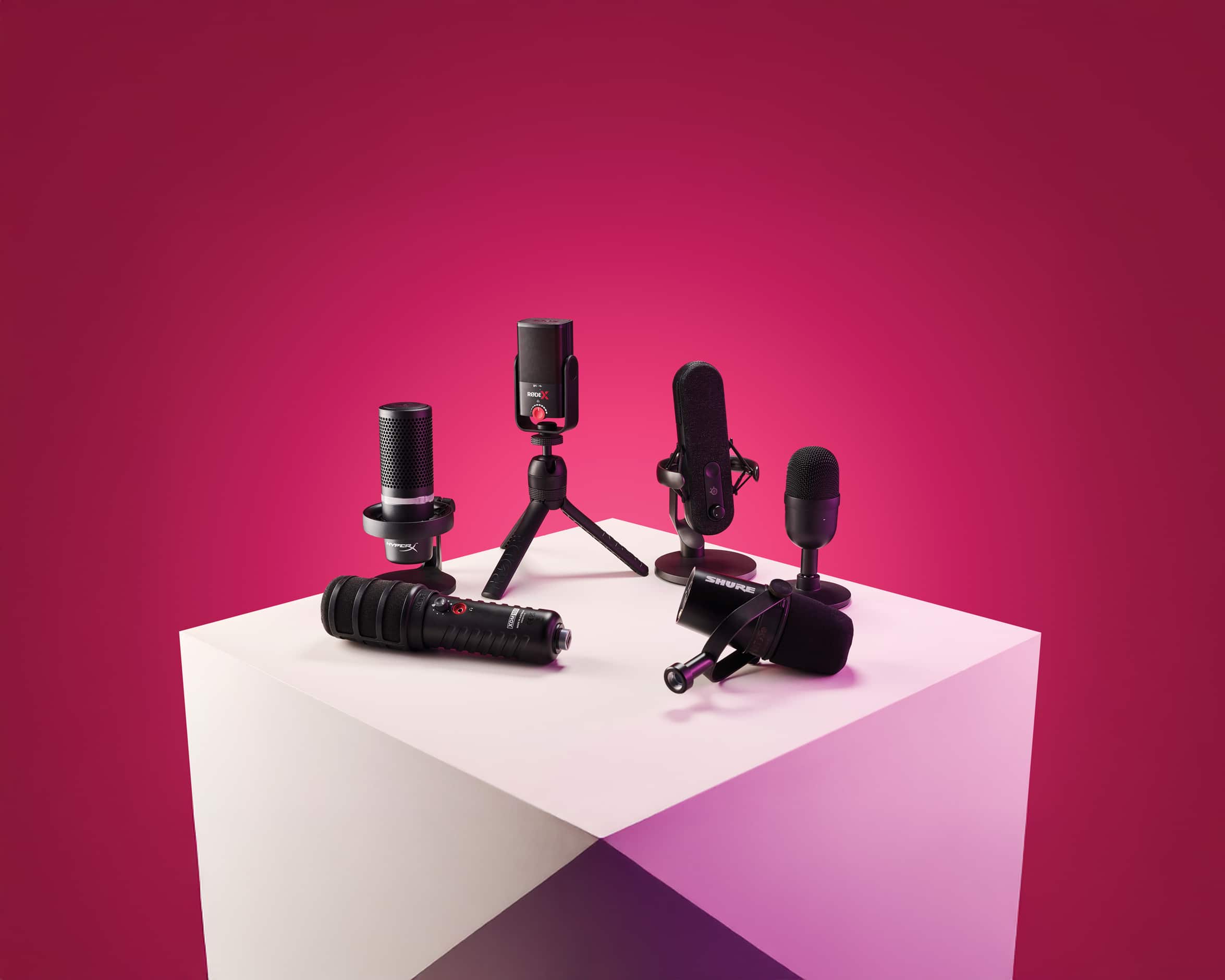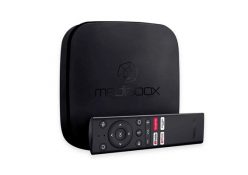A good microphone can be the difference between a professional-sounding triumph and a crackly, tinny disaster
Capturing great vocal audio from your PC used to be a bit of a teeth-clenching experience. Esoteric cables, strange terminology, and fiddly equipment previously made the process a lot more difficult than it needed to be. Luckily. there are now many easy-to-use microphone solutions on the market at a range of price points, taking the stress out of capturing top-quality sound Whether you are looking to break out as the next streaming sensation, finally start that podcast, or simply want to improve the audio in your daily meetings, a good microphone will take your audio to the next level. However, with a wealth of options to choose from, finding the right mic for you can still be a bit of a conundrum. Here are six microphones that might fit the bill for supremely Smooth sounds and eardrum-tingling audio.
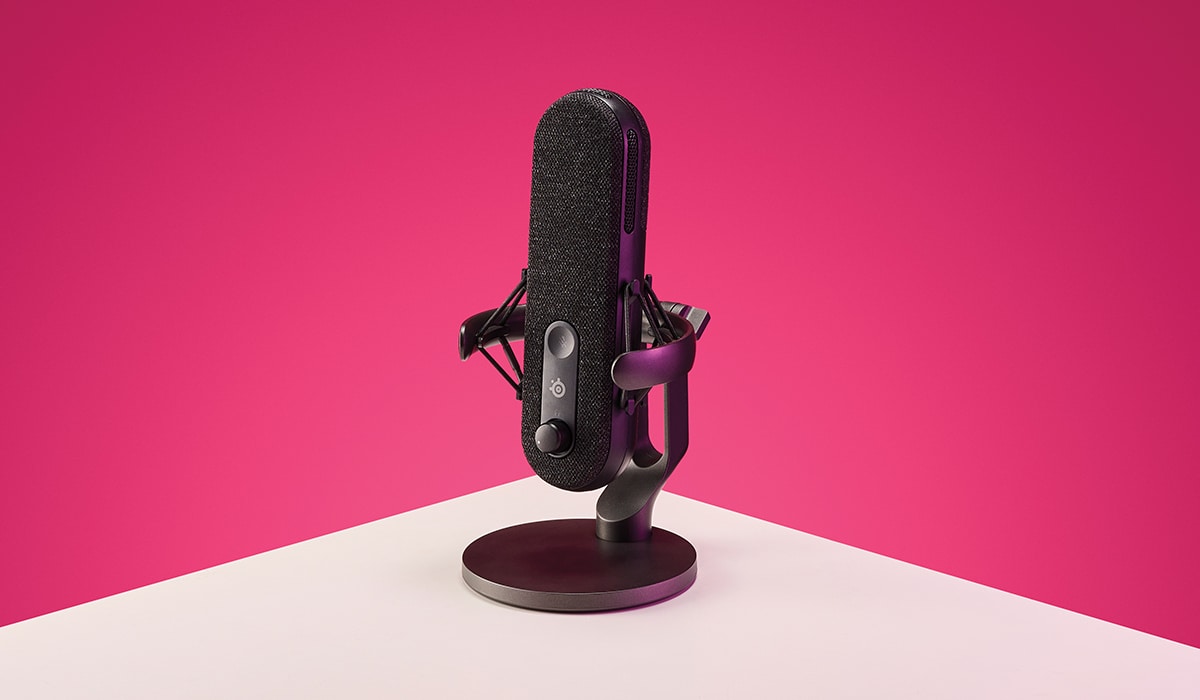
Alias – STEELSERIES
Premium contender
For most uses, a good cardioid desktop mic will capture a great vocal sound, providing it has a quality capsule. The SteelSeries Alias certainly has one of those but also comes nestled in its own supportive shock mount, meaning table bumps and vibrations are much less likely to make an appearance in your audio. The slim design means it doesn’t take up too much room on your desk either, and with its robust aluminum construction, the Alias doesn’t just feel the part, but looks it too. The Alias offers a clear, rounded sound, and picks up well at a distance while maintaining some midrange weight to your vocals. Combine that with the SteelSeries Sonar Al noise-correction software, and you have a relatively set-and-forget solution. The downside here is the price, as those just looking for decent audio quality may well be better off with a cheaper unit. Still, the little Alias has some impressive tricks up its sleeve and build quality that feels solid and dependable.
SPECIFICATIONS
- Dynamic capsule
- Cardioid pattern
- USB-C
- 48 kHz sample rate
- 50-20 000 Hz frequency range
From R4 000, steelseries.com
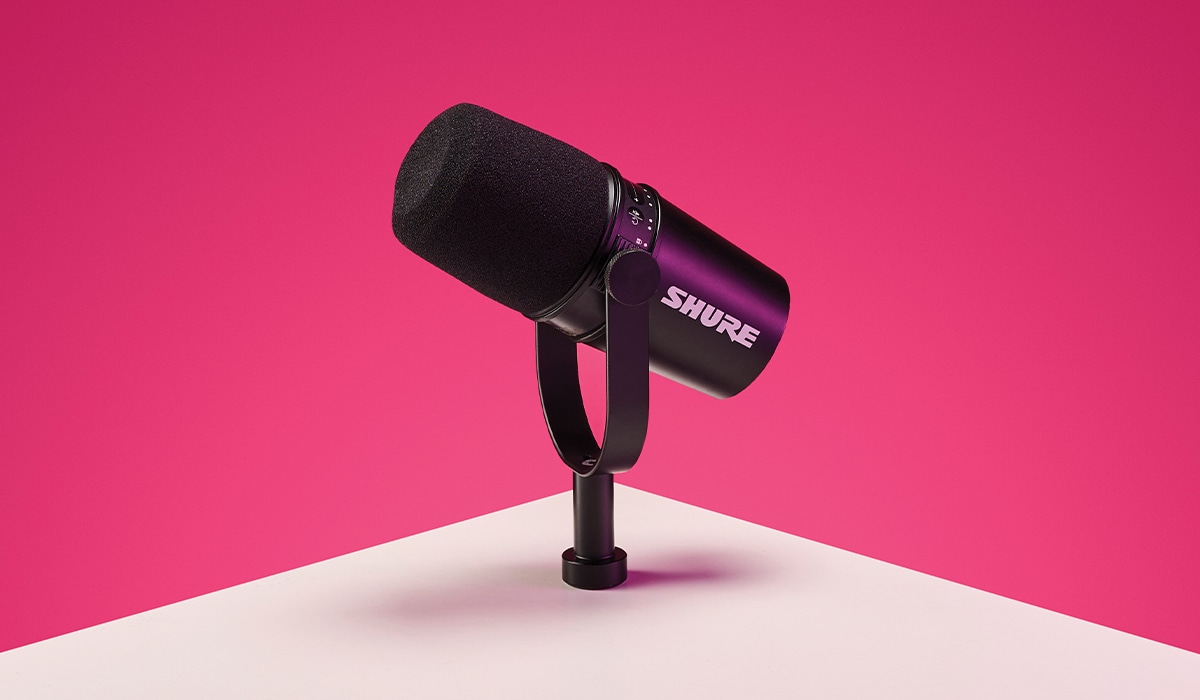
MV7 – SHURE
Professional assassin
Those who have been around the audio game for a while will be very familiar with the Shure brand, as it has been cranking out professional microphones for years. Listen to some of your favorite tunes and chances are at some point you will be hearing a Shure microphone at work.
The MV7 is Shure’s attempt at nailing a podcast audio mic in one easy swing, and in terms of sheer audio quality, it’s knocked it out the park. Warm, slightly crispy vocal audio is the MV7’s forte, although what it really likes is getting up close and personal. It’s a shame that il doesn’t come with a desktop mount – although you can buy one separately – but we’d highly recommend a boom arm and a pop filter to get it up close where it does its best work.
The MV7 can be used both as a USB mic and as an XLR unit with a separate audio interface, so top marks for versatility too. It’s a pricey option, but if you’re looking for audio that sounds truly brilliant, the Shure MV7 makes a great pick.
SPECIFICATIONS
- Dynamic capsule
- Cardioid pattern
- USB-C, XLR
- 48 kHz sample rate
- 20-20 000 Hz frequency range
From R5 800, shure.com
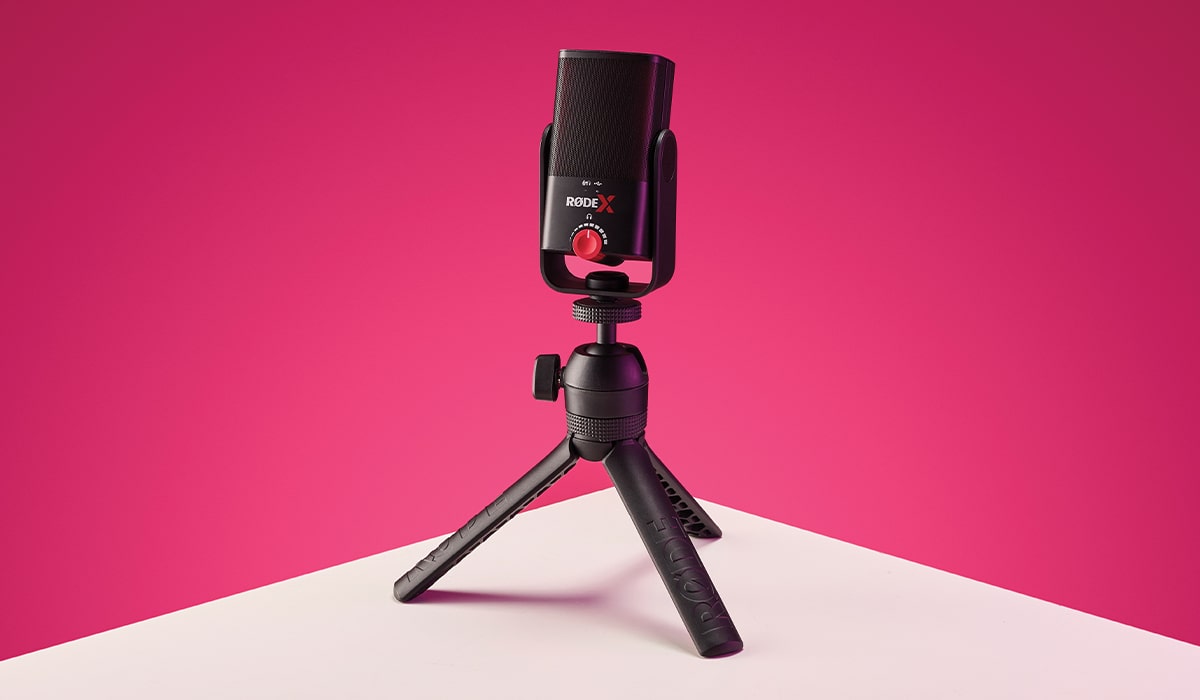
H2 XCM-50 – RODE X
Small but mighty
Everyone likes a compact piece of hardware that punches well above its weight, and the Rode X XCM-50 is just that. Tank-like construction and the addition of a solid tripod mount that folds into an easily transportable tube means this mic feels like a very tough piece of kit. It’s not just the build quality where the XCM-50 shines either. It captures a toasty-hot sound with a nice level of crispness and is not prone to plosives or hissy sibilance, while the Unify software gives you plenty of mixing options. The red front-mounted dial with a hidden mute button is a nice touch too. One slight let-down is that tripod stand, which, while reassuringly sturdy, only has two levels of height adjustment, and even at its tallest it still takes up a fair bit of your desk footprint despite the diminutive size of the microphone itself. It is also a bit heavy, even for such a small mic unit. Still, the little Rode impresses as a serious contender in a compact package.
SPECIFICATIONS
- Condenser capsule
- Cardioid pattern
- USB-C
- 48 kHz sample rate
- 20-20 000 Hz frequency range
From ±R2 700, rode.com
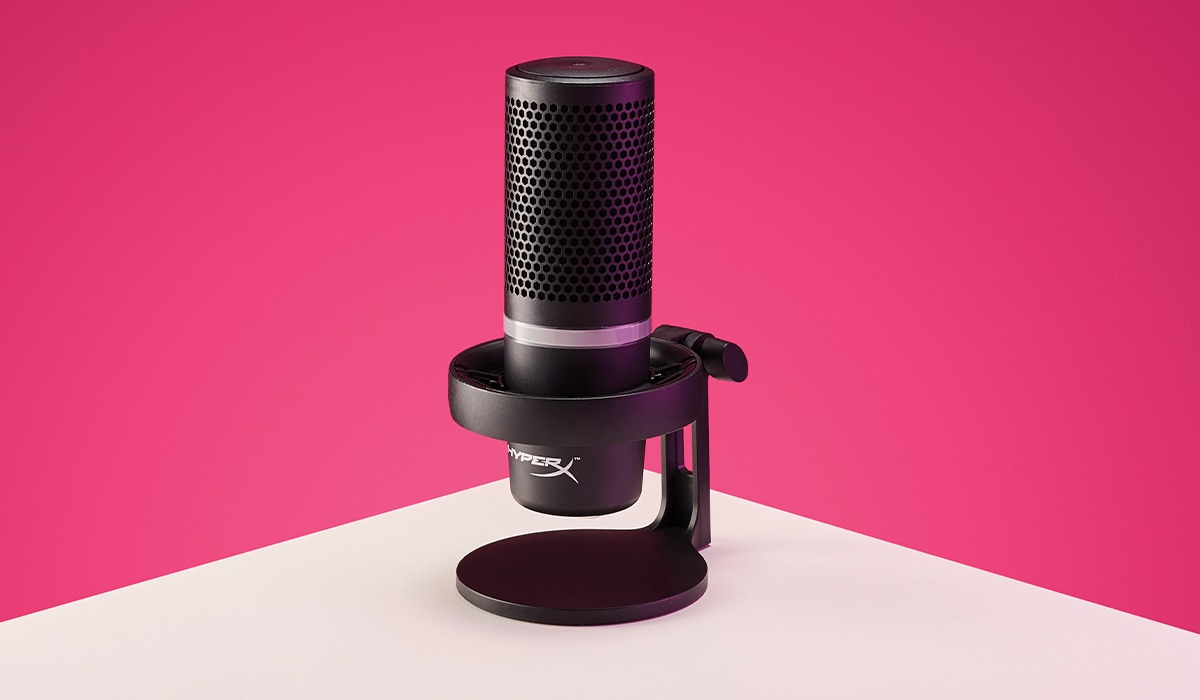
Duocast – HYPERX
Light touch
The Hyperx Duocast is flexible, in more ways than one. As the name suggests, you have the option here to switch between two polar patterns: traditional cardioid for single-user recording, and omnidirectional for recording multiple speakers at once.
That makes it a good pick for podcast recording on a budget, provided you’re prepared to huddle around it for the best capture. It will also add something of a vibe to your recording sessions, thanks to an adjustable RGB ring around the bottom of the mic unit itself.
Sound-wise, the capture is excellent, with a clear and crisp pickup no matter which mode you have the mic in. The Ngenuity software allows you to play around with audio and RGB options and the top-mounted tap-to-mute feature works well. However, the fly in the ointment here is the flimsy construction. The stand feels plasticky, and the mic wobbles around easily in its shock mount. Still, it’s relatively cheap, and the sound quality is not to be sniffed at.
SPECIFICATIONS
- 2 x Condenser capsules
- Cardioid/omnidirectional patterns
- USB-C
- 96 kHz sample rate
- 20-20 000 Hz frequency range
From ±R1 800, hyperx.com
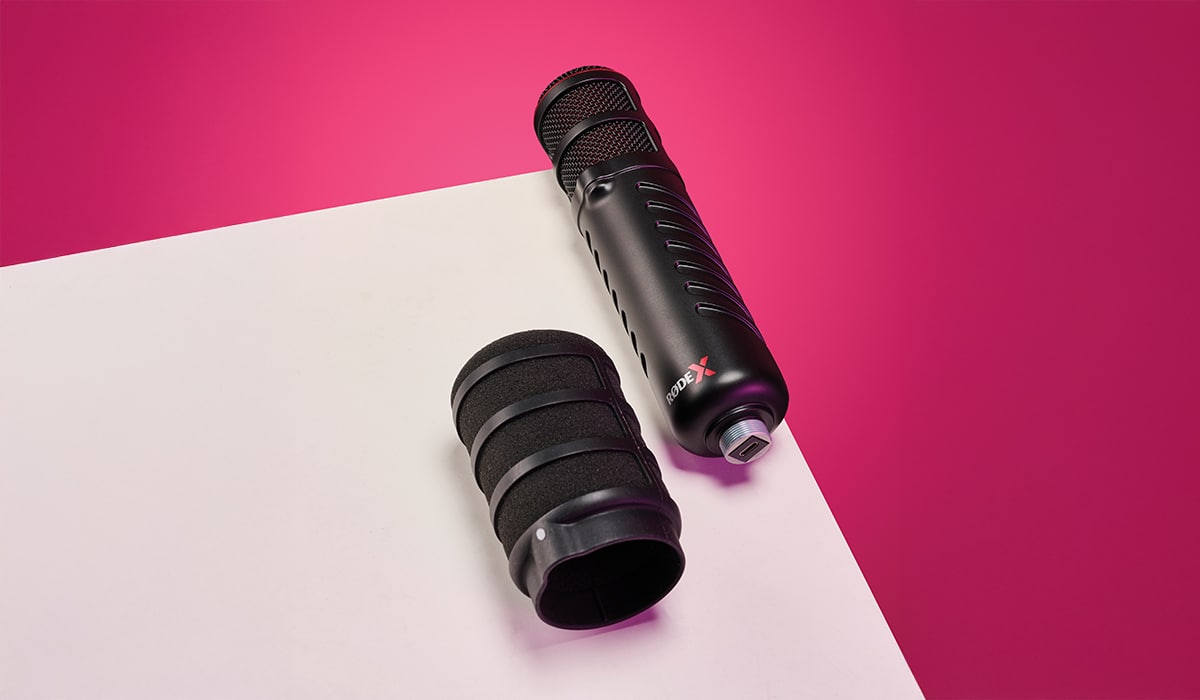
XDM-100 – RODE
Huge and hefty
The Rode XDM-100 is a serious bit of equipment, and that becomes obvious the second you hold one. It is supremely well built and feels like the sort of gear you would expect to find in a professional studio.
It also comes with an excellent pop filter, and a substantial shock mount to keep it isolated.
What’s missing here is a stand, as the XDM-100 requires nothing less than a substantial boom arm to hold itself aloft, and you’ll have to buy that separately. Much like the Shure MV7, this is a mic that likes to get close to capture all the fidelity it can, and if you bring it near you can expect stellar vocal capture, warm tones and sparkly highs.
This will be far too much microphone for many users, but those of you looking to get serious about audio quality without investing in an XLR mixer will find all you need here. There’s a single USB-C port for connectivity and some robust gain and headphone controls, but when it comes to pure audio chops, it has you covered.
SPECIFICATIONS
- Dynamic capsule
- Cardioid pattern
- USB-C
- 48 kHz sample rate
- 20-20 000 Hz frequency response
From R5 800, rode.com
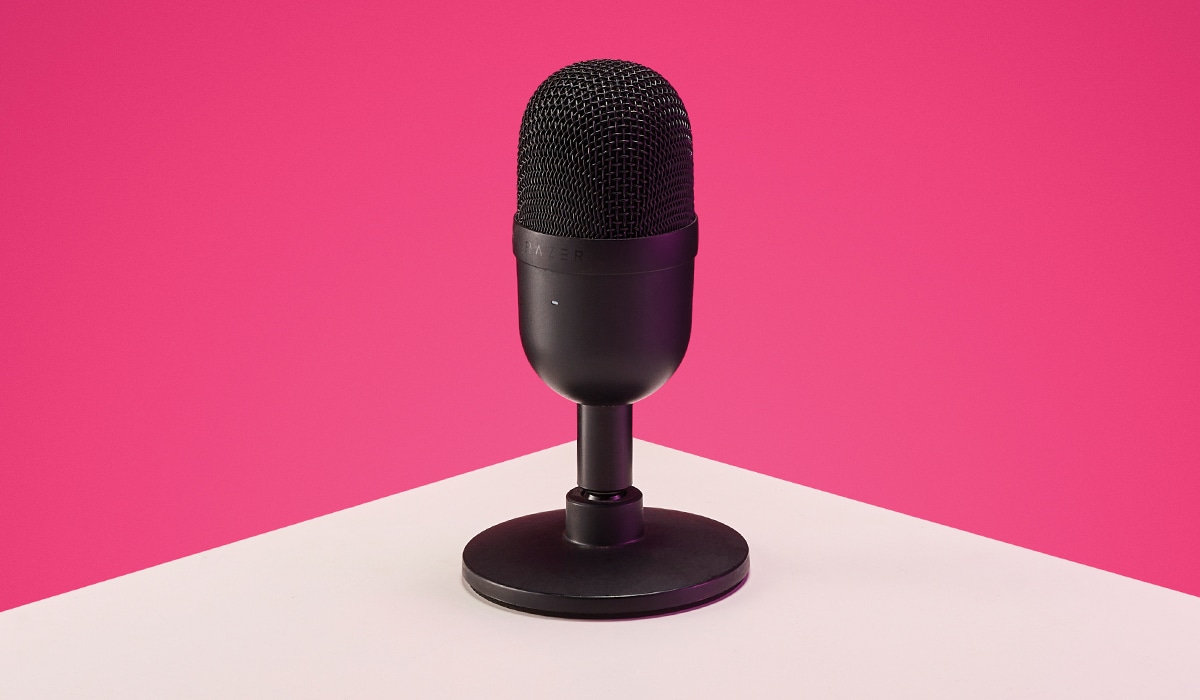
Seiren Mini – RAZER
Super smol
The Seiren Mini is all about delivering a no-fuss microphone at a bargain price without compromising on the audio quality. Razer has cut all the extraneous elements from this diminutive microphone while still using the same essential components from its higher-priced Seiren line. That means you get the same quality of audio capture – though with only a solitary supercardioid pattern – but without any extra features. That can be both a blessing or a curse, depending on what you want. If you’re after just a good desktop mic to use instead of your dodgy headset mic, this is great, but if you are after more control for more serious use, then the lack of volume, gain, or even a mute button will be a frustration. There’s no option for a boom arm mount, either. For us, being able to plug it in and get going without having to think about it at all makes it our favourite budget gaming mic bar none. And it comes in different colours, too, which has got to be a win however you look at it.
SPECIFICATIONS
- Condenser capsule
- Supercardioid pattern
- USB
- 48 kHz Sample rate
- 20-20 000 Hz frequency response
From ±R1 100, razer.com
Microphone polar patterns explained
CARDIOID
This polar pattern captures a heart-shaped area of sound around the front of the mic, making it resistant to background noises and resulting in a usable vocal signal.
SUPERCARDIOID
A supercardioid pattern captures a slightly narrower ‘bubble’ of sound at the front of the mic, while also picking up a small amount from the rear of the mic for added depth.
BI-DIRECTIONAL
A bi-directional pattern captures audio from both the front and the rear of the microphone, which is perfect for two people talking into the same mic from either side at the same distance.
OMNIDIRECTIONAL
These microphones have the same sensitivity from all directions, making them great for capturing a whole room or multiple speakers at the same time.
By: Andy Edser
Text courtesy of TECH magazine



